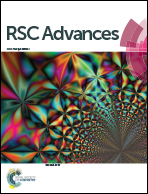Plasmonic absorption activated trapping and assembling of colloidal crystals with non-resonant continuous gold films
Abstract
Here we report the realization of trapping and assembly of colloidal crystals on continuous gold thin films based on the combined effect of thermophoresis and thermal convection associated with plasmonic optical heating. In the system, the stabilized trapping phenomenon is driven by thermophoretic forces caused by a temperature gradient which pushes the target particles from cold to hot regions and always in an opposite direction to the axial convective drag forces. Furthermore, the lateral convective flow of an aqueous medium accelerates the formation of the trap considerably by dragging target particles into the hot region from a long distance. The influence of salt concentration on the trapping behavior has also been investigated. Typically the threshold optical power density is in the order of microwatts per square micrometer (∼μW μm−2). We anticipate that the reported optical trapping approach may find many potential applications in biophysics, life sciences, and lab-on-a-chip devices.


 Please wait while we load your content...
Please wait while we load your content...